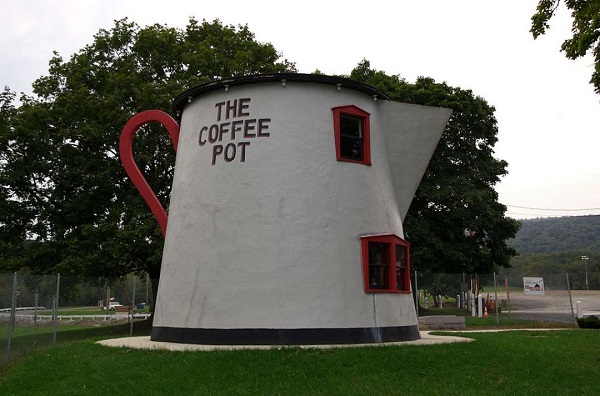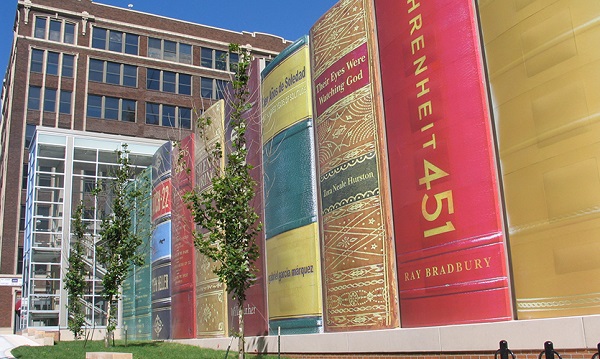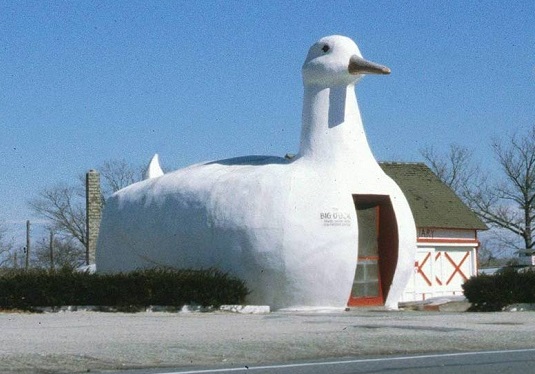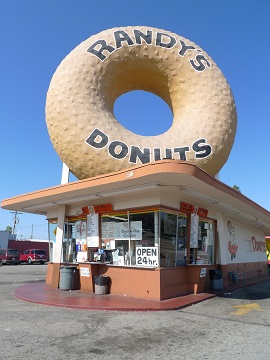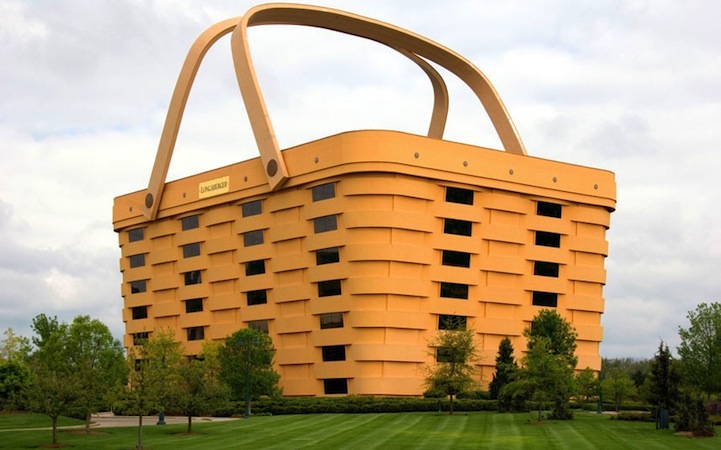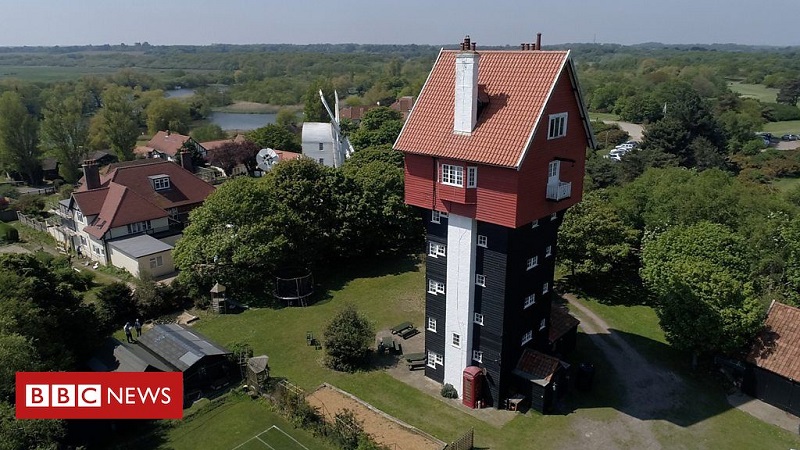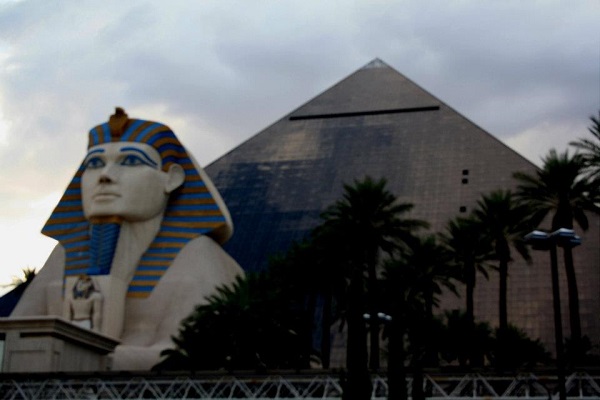Mimetic architecture
Mimetic architecture, also known as ‘novelty’ or ‘programmatic’ architecture, is a style of building design popularised in the United States in the first-half of the 20th century. It is characterised by unusual building designs that mimic the purpose or function of the building, or the product it is associated with.
Mimetic architecture was particularly popular between the 1920s and 1950s, as cars became widespread and freeways were built across America. Some roadside architecture started to be seen as a means for advertising to passing cars. For example, a roadside restaurant might be designed in the shape of a giant hot dog, a coffee shop in the shape of a coffee pot, or a fruit stand in the shape of a piece of fruit.
While mimetic architecture fell from favour after the 1950s and many such buildings were redeveloped or demolished, their size and novelty means that many are now viewed as local landmarks to be preserved.
[edit] Famous examples include:
Kansas City Public Library, Kansas City
Randy’s Donuts, California
The Big Basket, Newark
Water towers and storage tanks are often disguised in inventive ways, such as the House in the Clouds in Thorpeness (below).
Mimetic architecture can also refer to the replication of famous landmarks. This is popular in China, Japan and particularly, the United States. Perhaps the place where this is most synonymous is Las Vegas where buildings have been constructed that mimic an Egyptian pyramid (Luxor Las Vegas), the New York skyline (New-New York Hotel and Casino), the Eiffel Tower (Paris Las Vegas), a cartoon-medieval castle (Excalibur), the Rialto bridge (Venetian), and Roman classical architecture (Caesar’s Palace).
[edit] See our unusual buildings gallery HERE.
[edit] Related articles on Designing Buildings
- American architecture and construction.
- Architectural styles.
- Art Moderne.
- Big Duck.
- Britain’s greatest maverick building.
- Constructivist architecture.
- Dancing House, Prague.
- Dunmore Pineapple.
- Fish Building, India.
- Gereja Ayam.
- Haines Shoe House.
- Historical versus Modern: Identity through imitation.
- Lotus Temple.
- Luxor Las Vegas
- Metabolism.
- Piano Building.
- Skeuomorphism.
- Teapot building.
- Teapot Dome Service Station.
- The Big Basket.
- The Kelpies.
- The Oculus.
- Unusual building design of the week.
Featured articles and news
Infrastructure that connect the physical and digital domains.
Harnessing robotics and AI in challenging environments
The key to nuclear decommissioning and fusion engineering.
BSRIA announces Lisa Ashworth as new CEO
Tasked with furthering BSRIA’s impressive growth ambitions.
Public buildings get half a million energy efficiency boost
£557 million to switch to cleaner heating and save on energy.
CIOB launches pre-election manifesto
Outlining potential future policies for the next government.
Grenfell Tower Inquiry announcement
Phase 2 hearings come to a close and the final report due in September.
Progress from Parts L, F and O: A whitepaper, one year on.
A replicated study to understand the opinion of practitioners.
ECA announces new president 2024
Electrical engineer and business leader Stuart Smith.
A distinct type of countryside that should be celebrated.
Should Part O be extended to existing buildings?
EAC brands heatwave adaptation a missed opportunity.
Definition of Statutory in workplace and facilities management
Established by IWFM, BESA, CIBSE and BSRIA.
Tackling the transition from traditional heating systems
59% lack the necessary information and confidence to switch.
The general election and the construction industry
As PM, Rishi Sunak announces July 4 date for an election.
Eco apprenticeships continue help grow green workforce
A year after being recognised at the King's coronation.
Permitted development rights for agricultural buildings
The changes coming into effect as of May 21, 2024.







